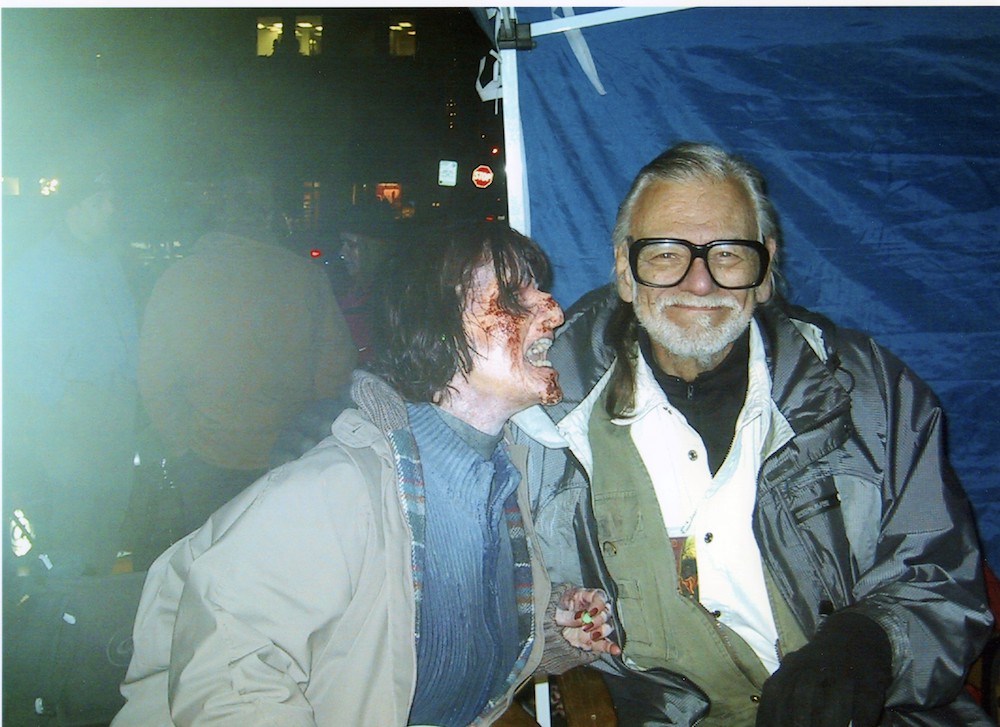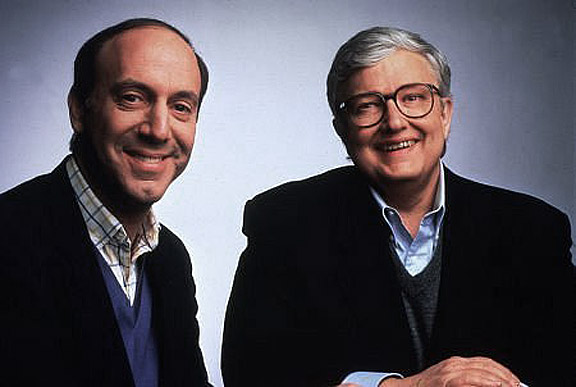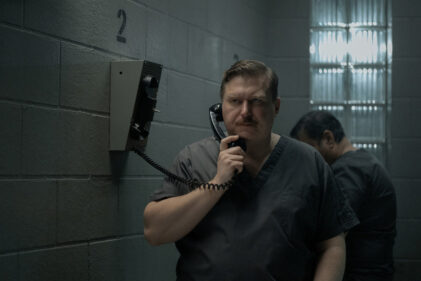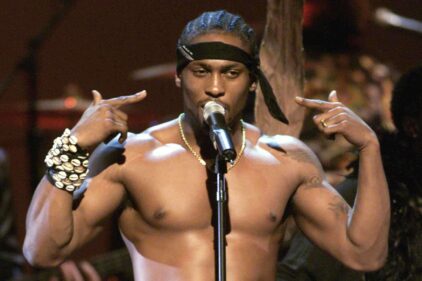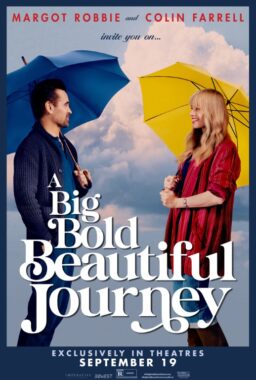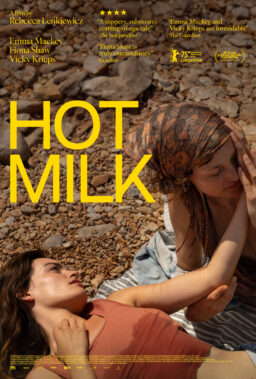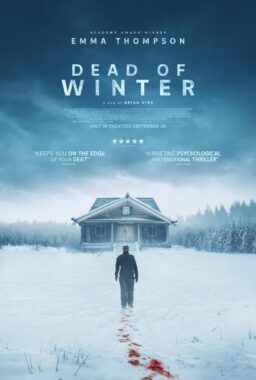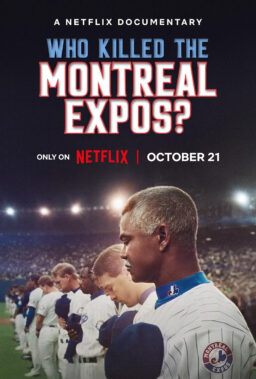The world lost one of its best filmmakers this past Sunday with the death of George Romero. Peter Sobczynski penned our obituary, but we wanted to let other members of our staff share their thoughts on such an influential, legendary director.
BRIAN TALLERICO
George Romero taught me how to read film. Like a lot of kids in the ‘80s, I went through what you could call a “horror phase.” You reach a certain age and the filmographies of John Carpenter and Wes Craven become something of a requisite to being a teenage boy. And, of course, they’re joined by dozens of “lesser” horror films when you grow up in the heyday of the slasher pic. Horror is a visceral thing at first. It’s about “being scared,” or just seeing some quality kills when you’re at an age where that kind of thing is new and different. Then I saw “Dawn of the Dead” and “Day of the Dead,” which allowed me to realize how subversive and socially conscious horror could be. Sure, they’re zombie films, but they’re also about consumerism and the military-industrial complex. Wait, a horror movie can be more than just Jason slashing people up in the woods? Show me more.
When you dig into George Romero’s films, you find layer after layer of not just amazing, underrated filmmaking but deep, brilliant social consciousness and political commentary. They taught me that great films aren’t just experiences but fuel for thought and conversation and discussion and, yes, criticism. I wanted to write about film, in a sense, because of that world-expanding feeling I got from those Romero films. I’ve often thought that I would one day write a book about zombie films and I think that’s, in part, because of how much I trace my appreciation and analysis of cinema back to Romero.
George Romero constantly defied simple categorization, making movies that broke ground in terms of not just what the genre was capable of doing, but all filmmaking. “Night of the Living Dead” isn’t just an important or influential “zombie movie,” it changed everything. I’m heartbroken because I never got to thank Mr. Romero personally for how much his movies meant to me and how much I still adore and admire his work. When I found out he passed I had to stop walking and sit down on a bench to get my bearings. It felt like I had lost a friend. At least I know I lost a teacher.
OLIVIA COLETTE
The questions I ask myself before watching any horror movie are:
1. What is the monster?
2. Is it actually a monster?
The first question is designed to measure the level of monstrosity and/or humanity of the main threat or antagonistic force. How much of an “other” is it? Does it look like us or is it altogether otherworldly? Does it have arms or tentacles? Does it have teeth or fangs? This helps me situate myself in the movie’s mythology, and it determines what the protagonists—standing in for the audience—are up against.
The second question tells me about the movie’s subtext. Even if the monster is actually a monster, it often serves as a barometer, gauging its prey’s concerns and conflicts. How its victims react to it, what they try to understand about it (if anything), and whether or not the monster can be subdued are all analogous to things that society happens to be grappling with at that moment. When the monster is not actually a monster, it’s usually because its victims created it, either scientifically or by way of perception.
George Romero’s “Night of the Living Dead” was the beginning of me taking an interest in horror, because that movie’s “monster,” as it were, was us and also not us. Our collective fear of death turned the zombies into monsters, and each time the protagonists killed one of them, it led non-zombies that much closer to extinction because, by the movie’s rules, a dead zombie is well and truly dead. The long-term significance of that is far more terrifying than the zombies themselves: if zombies outnumber us, we will all be turned into zombies, we will all starve, and we will all die forever, with no one left to care that we died. That level of meaningless is scary, isn’t it?
Through this movie, Romero showed me that a monster was never *just* a monster.

BOB CALHOUN
George A. Romero died yesterday. He was probably my favorite filmmaker if I really stop and think about it. This is a little rambling—like a flood of thoughts about Romero all strung together. It’s all I’m capable of at the moment.
When I was a little kid, like a real little kid, “Night of the Living Dead” went beyond being just a movie. It was an urban legend, a ghost story, a bogeyman. It was something my older sister’s friends tripped over on late night TV or as the second feature at the drive-in. It was just the scariest thing of all time. When horror host Bob Wilkins showed the trailer for “Night of the Living Dead” on “Creature Features” on KTVU Channel 2 out of Oakland one Saturday night, six-year-old me ran screaming out of the living room, and I was already a monster-obsessed kid at that age. Karloff, Lugosi, Vincent Price, or Godzilla I could take. That 60 seconds of concentrated “Night of the Living Dead” cut to its slow heartbeat sound, and that creepy voice bathed in slapback echo saying the film’s title was just too much. When “Creature Features” showed the whole movie the next week, I stayed away.
Some 25 years later, 9/11 happened. I couldn’t get to sleep. I don’t know if anybody could get to sleep. A lot of basic cable networks hadn’t altered their regularly-scheduled programming in light of the tragedy. A&E used to show movies instead of infomercials in the middle of the night back then. They showed “Night of the Living Dead.” It struck me how much of that movie shows people watching TV while the world ends like we’d been doing all damned day. Of course, the assassination of John F. Kennedy had happened only five years before Romero made “Night of the Living Dead,” so that’s what he was riffing on more than anything else, but it was still eerie as all getout on that day of all days especially.
I still don’t know where I’m going with all of this. Romero is gone. I met him once. I didn’t regret it. I’ve regretted meeting other heroes. They were aloof or maybe just grouchy or whatever, but Romero seemed so genuine, so happy to be there meeting his fans. I asked him if he wished he had trademarked the hell out of all things zombie way back when.
“I don’t think you can trademark zombies, man,” he said with a chuckle. “They were around long before I came along. They were always in the Caribbean. I just made them suburbanites.”
Other thoughts: “Knightriders” is a bit on the sentimental side, but it is a visual masterpiece. I’ve watched it twice now since hearing Romero was gone (Amazon 24-hour rental, got in my viewings here) and I’m just blown away by Romero’s framing, his shots, and the cuts during the motorcycle joust scenes. Watch it and pay attention to the visual technique there. It’s amazing. It’s also probably Romero’s most personal film. The troupe of medieval armor-wearing roustabouts wrestles with just how much they can sell out, or if they can sell out at all, just the way Romero must have. He felt the pull of Hollywood to be sure, but stayed in Pittsburgh. Thank God he did really, because who would film that gorgeous western Pennsylvania countryside if not him?
MICHAŁ OLESZCZYK
Before I got to see “Night of the Living Dead” in its entirety, I caught a brief glimpse of if on Polish regional TV channel in 1994, very late at night. I was twelve at a time and would gobble up any horror flick coming my way—even if access to them was still quite limited in my native country. Still, I remember this very distinctly: the image I glimpsed was so scary, so suffused with dread and (yes) sadness, I freaked out and switched off the TV never to put it back on that late evening. Was it some particularly gory bit I stumbled upon, with zombie make-up at its most extreme … ? Not at all. The scene was that of the stranded survivors picking up planks of wood and nailing them to door and window frames in order to resist the upcoming zombie attack. I remember the gritty, matter-of-fact nature of that scene, and I recall that one of the women in it was crying, almost as if she was putting together a coffin for her loved one. (In a way, she was.) The chilling aura of the scene, predicated on the inevitable nature of the upcoming apocalypse and its absolutely real, mundane detail, stayed with me for many years. Soon after, I saw the 1978 “Dawn of the Dead” and was shocked and amazed by it. And then, at around 18 years of age, I finally put my hands on a DVD of the original “Night of the Living Dead.” That image I remembered didn’t lose anything of its power, and the opening graveyard sequence immediately made it to the very top of my private list of scariest film openings. I explored Romero’s work after that, became a fan of “Martin” and “There’s Always Vanilla,” but his name is still associated in my mind with that single horrific moment that made me, for once, become my Mother’s ideal child and switch off a scary movie out of my own volition.

Soon after, I saw the 1978 “Dawn of the Dead” and was shocked and amazed by it. And then, at around 18 years of age, I finally put my hands on a DVD of the original “Night of the Living Dead.” That image I remembered didn’t lose anything of its power, and the opening graveyard sequence immediately made it to the very top of my private list of scariest film openings. I explored Romero’s work after that, became a fan of “Martin” and “There’s Always Vanilla,” but his name is still associated in my mind with that single horrific moment that made me, for once, become my Mother’s ideal child and switch off a scary movie out of my own volition.
SEAN MULVIHILL
Bereft of life, they rest in peace. Until they rise. And therein lies the greatest creation of George A. Romero. With a group of friends and a minuscule budget, Romero created an entire subgenre of horror cinema built around the cannibalistic hoards of the undead rising from the grave. “Night of the Living Dead” unleashed a pop culture phenomenon that has only grown stronger in the 50 years since its debut. Before Romero, zombies were the highly persuasive victims of a voodoo curse. Now, they’re mostly identified in the mold that Romero created with his “Dead” movies—slow moving and endlessly craving human flesh.

The work of Romero isn’t simply limited to the undead. The writer and director dove deep into the heart of the most horrific aspects of teenage angst with the startling “Martin.” In a collaboration with Stephen King, Romero directed an anthology movie that played as a lengthy homage to the horror comics churned out by E.C. Comics with “Creepshow” (pictured above). Throughout the filmography of Romero lies a balance between the youthful thrill of the ghastly and a cerebral understanding that terror isn’t simply rooted in gore and creatures that lurk in the night.
In my ever so humble opinion, Romero’s 1978 masterpiece “Dawn of the Dead” remains the finest piece of horror cinema ever made. Romero didn’t simply just expand the mythology of the undead, he used the growing zombie plague as a means to examine America and the self-destructive nature of humanity. “Dawn of the Dead” highlights the twisted aspects of American consumerism, presenting us with a nightmarish vision of mindless masses rushing the halls of a mecca of capitalism well before Black Friday was a yearly occurrence.
I’ll never forget the incredulous tone of a high school friend when he learned I had yet to see “Dawn of the Dead.” It was as if my horror fan bonafides were suddenly called into question. His summation was simple: “Mall. Zombies. Bikers.” With that I was sold and then it became one of my all-time favorite movies, one that I still take the time to watch each and every year around Halloween. It was one of the first movies that helped me realize that it’s not all about what’s on the surface, especially with its dark, twisted themes highly critical of American society underneath the gorefest.
Later in his career, Romero never shied away from social commentary and that’s especially present in the divisive among devotees “Land of the Dead,” which took on the post-9/11 American mentality as well as its commentary on income inequality well before it became a national talking point. “The Walking Dead” wouldn’t exist without the groundwork laid by Romero, and as hard as the show’s creative team tries they can’t even come close to the scathing societal critique that Romero seemed to do effortlessly. Though this American legend has left this plane of existence, Romero’s work will endure every time a member of the recently deceased rises from the dead in search of human flesh for which to feast. Judging by the pop culture landscape, the legacy of George A. Romero won’t be forgotten any time soon.
SUSAN WLOSZCZYNA
It was a muggy summer night in the early ‘70s at a suburban Buffalo drive-in where I first got bit by the zombie bug. My friend, Tom Goodwin, and I had not yet seen this black-and-white film that people were talking about, a horror film called “Night of the Living Dead.” I remember it was second on the bill to an anemic Hammer vampire outing that seemed interminable. I just wanted to feast on all the cannibalism I had heard about. But at least it would be suitably pitch dark by the time the zombies arrived.
Up until this moment, the only cinematic walking dead I knew about were those under a voodoo spell, such as the somnolent woman in 1943’s “I Walked With a Zombie.” But when those stark images of a cemetery filled the screen as Johnny, and his sister, Barbara, pulled up in the car to a gravesite, the hairs on my arm began to tingle and a sense of unease began to grow. Not helping was when Johnny teasingly taunts his unnerved sister: “I’m coming to get you, Barbara!” Of course, they are coming to get HIM and soon enough he joins a growing flock of infected flesh-eating fiends that force Barbara and six other strangers to seek shelter in an old farmhouse.
I was riveted by the inky images, sudden scares and tense exchanges onscreen. But I was most unnerved by the 11-year-old girl who was bitten and would end up feeding on her own mother after killing her with a trowel. But not all the action was on the giant outdoor screen. Patrons started getting out of their cars, waddling up to other vehicles and knocking on our windows. It was all wonderfully horrifying.
While the movie replayed in my head on the way home—I asked Tom to go into the house with me to make sure no one munched my parents—I realized I had seen something not just shocking, also completely new. A scary movie where the monsters were just regular people. I did not get into the politics so much then. But I realized that the violence in the film echoed the Vietnam War body count that came into our homes via TV news every night. It also reflected the racial unrest at the time. considering that the hero was played by a rare black lead, Duane Jones, along with the tragic fate that ultimately greeted him at the end. This wasn’t some gothic period piece. This was NOW.
When I learned the man responsible for this mayhem was one George A. Romero, he became an idol of mine. I had to bow down to someone who could scare me this much. When the second round of Romero innards eaters came around in 1978 in the form of “Dawn of the Dead,” I was there the first weekend. I believed I cheered when a helicopter blade in the midst of an attack sliced someone’s head off. Clearly, I was definitely infected by zombie fever. I even considered the benefits of actually living in a mall, which was the homey refuge for survivors save for the bikers that infested the shrine to consumerism.
When 1985’s “The Day of the Dead” arrived to complete Romero’s trilogy, I was less enamored by such goings-on. Slasher flicks were the go-to fright fare by then. But then in 1993, I convinced my editors at USA TODAY to cover the 25th anniversary gathering in honor of “Night of the Living Dead” being held at the Monroeville Mall outside of Pittsburgh where “Dawn” was filmed. I hunted down every cast member I could, before the Zombie Jamboree and during. (Jones died in 1988 and the convention was dedicated to his memory).
First in my sights was Romero, then 53. He spoke to me from his hideaway on Sanibel Island in Florida. “I’ve spent my whole life trying to escape ‘Night of the Living Dead,’” he said of the film that cost $114,000 and took 30 days to film over nine months. “But it keeps coming back.” As zombies are wont to do. He also explained why “Night of the Living Dead” still continued to cling to him as well as to the imaginations of movie fans: “There’s nothing scarier than seeing your neighbors lurking under a tree.’
But my biggest thrill came when I met Kyra Schon, who played that ravenous little girl with the 4 a.m. dark shadows under her eyes. She grew up to be a middle-school art teacher and was selling “Night” T-shirts featuring her original design. Says the daughter of the film’s co-producer Karl Hardman, who played oafish Harry, “This is my home movie.”
I thought I had finally experienced zombie nirvana, especially when I watched the film with the participating cast members right beside me. Then a funny thing happened in the early 2000s. Undead horror started making a comeback. First came the video-game-based franchise “Resident Evil.” That was followed by Danny Boyle’s sleeper hit “28 Days Later.” Then director Zack Snyder made a name for himself with a remake of “Dawn of the Dead” (which turbo-charged Romero’s brand of slow-moving revived corpses).
Suddenly, Romero himself was back in demand along with his terrifying creations after Universal, the company behind the “Dawn” remake, beckoned him to do a fourth zombie film and first for a major studio, “Land of the Dead.” And my Universal contacts, who knew of my fixation with Romero’s creations, invited me to be a zombie extra in the film that was being shot on the cold streets of downtown Toronto in November (picture shown at the top). My only request was that my name would appear in the credits. If you click here, you can read about my giddy exploits up north. I will only say that when they shot my first scene, the assistant director had to sternly tell me that “zombies do not smile.”
Just a couple weeks ago, I reminded “Baby Driver’s” Edgar Wright that we were both extras in “Land” and I had more screen time than he did (I appear in Chapter 14 of the DVD). He, as he proudly reminded me, has his zombie visage prominently displayed on the film poster. Little did I know then that Romero would be leaving for the land of the dead himself all too soon. While he might have given others nightmares, he made some of my dreams come true. He was a generous soul, honest and forthright, a man who eschewed bull-shit and told it how it was, and has left a legacy in the form of a continuing zombie revival that has yet to subside.
One of my favorite quotes that I got about Romero at the Zombie Jamboree comes courtesy of the late Bill “Chilly Billy” Cardille, a onetime Pittsburgh horror-movie host turned weatherman who appeared in “Night”: “George is one of the nicest guys in the world. But he’s weird. When he sits in the dark, he doesn’t think of women. He thinks of things.” Things with a lasting bite.
